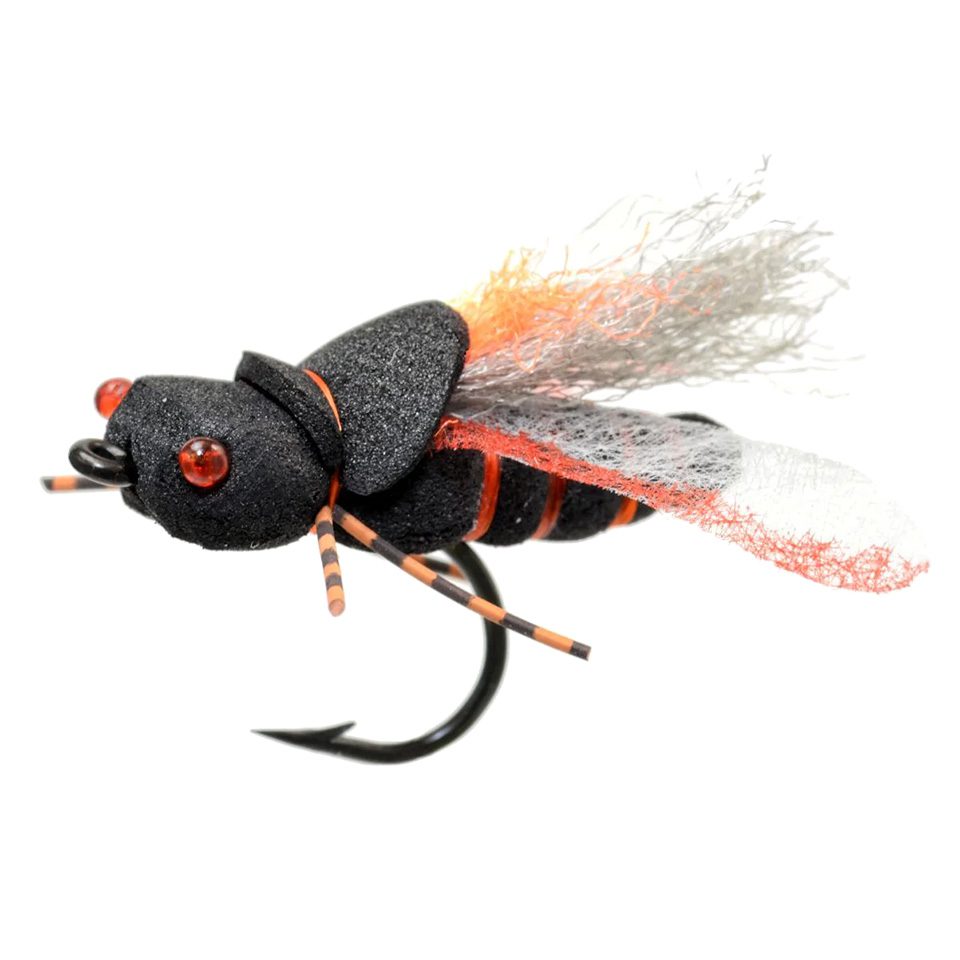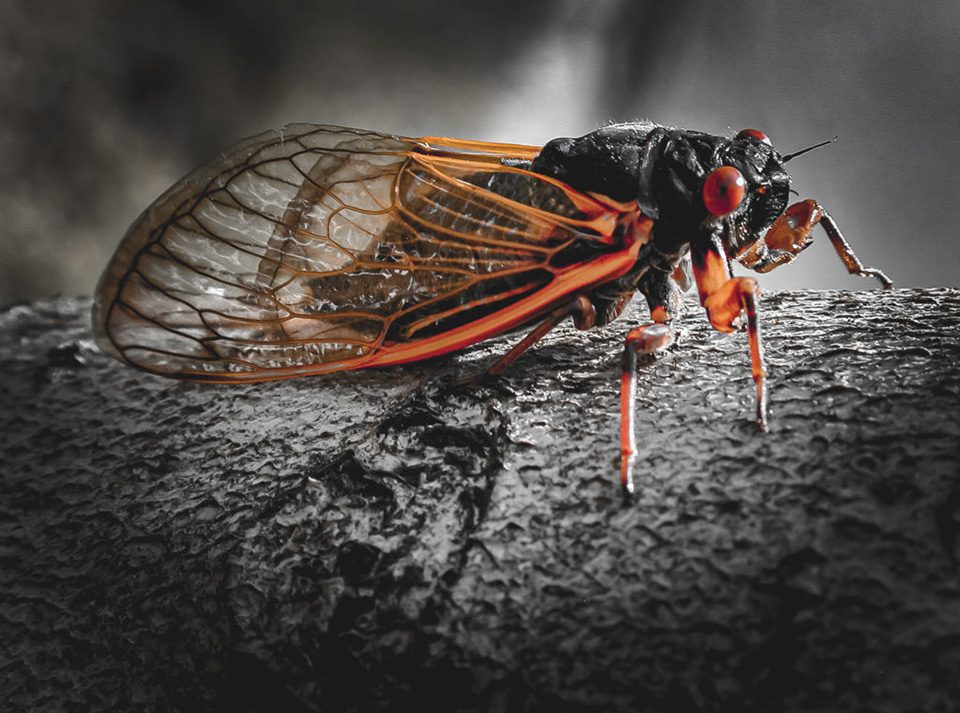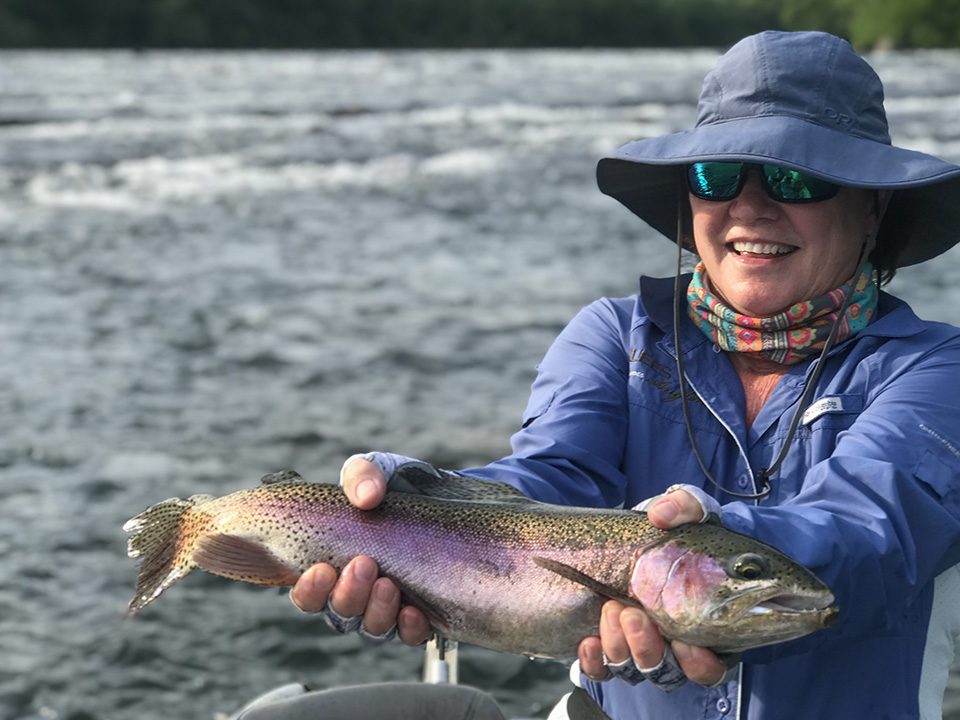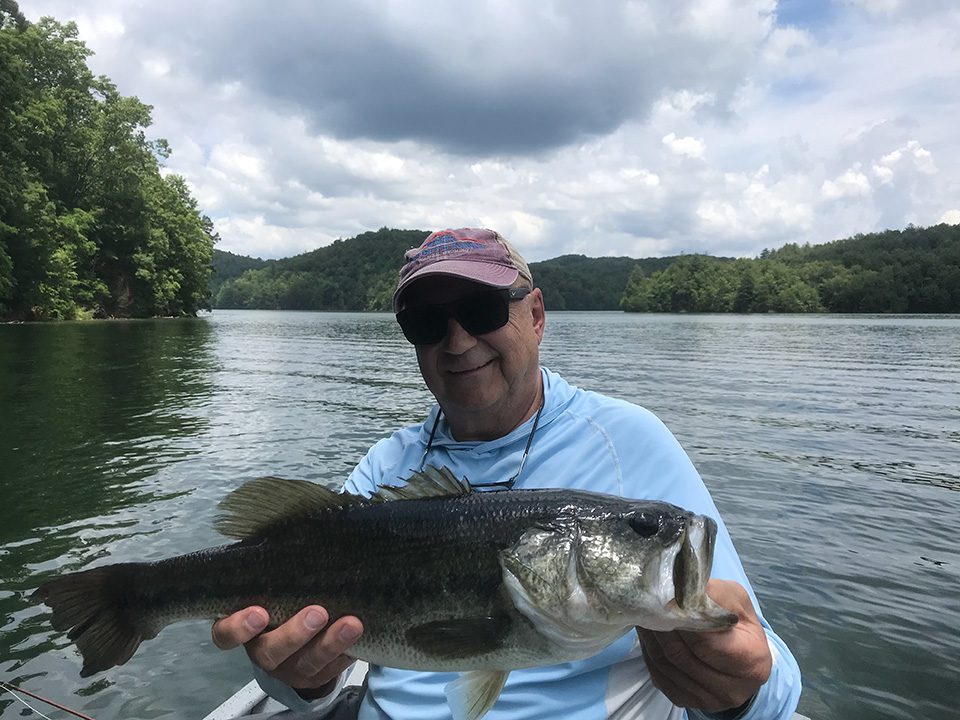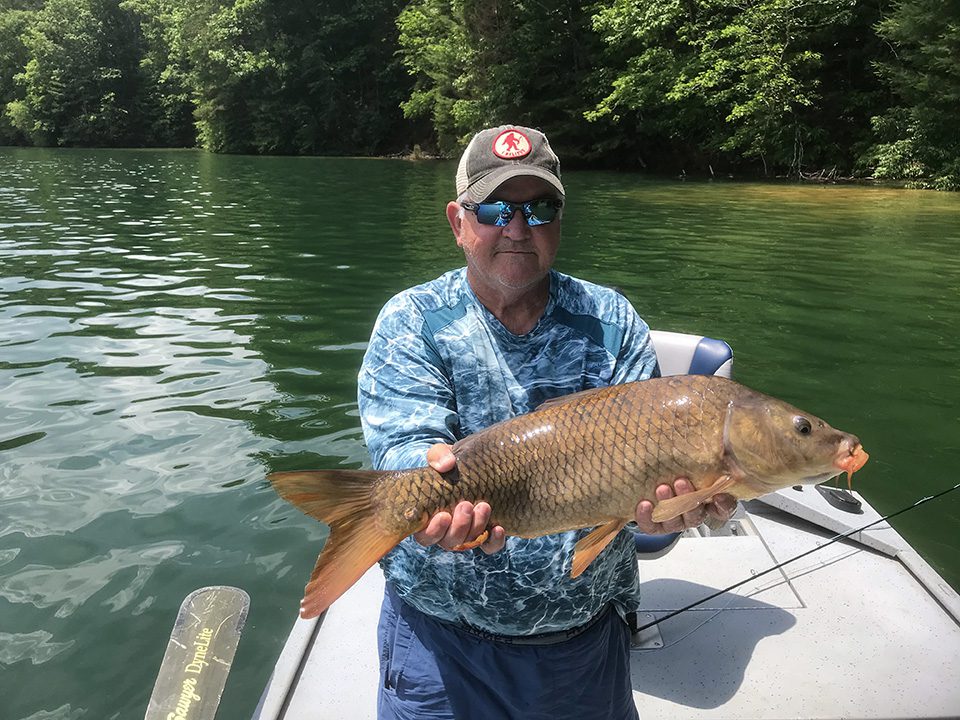By Nick Carter
Cicadas are some of the most prevalent, yet overlooked, insect hatches for anglers. In the eyes of fish, these big droning bugs are like a bacon double cheeseburger slapped down in the middle of a tray of finger sandwiches. When a fat cicada crashes on the water with a plop, it is stuck there floundering around until something with a big enough mouth shows up to eat it. To trout, largemouths, smallmouths, spots, stripers, catfish, carp and other species, a cicada struggling on the surface is irresistible, and a large cicada hatch can bring on some incredible dry fly action.
There are some cicadas that hatch every year, and these can be excellent for getting the bass fired up on top at your local pond on summer evenings. However, the periodic broods with long lifecycles are what get fish and fishermen excited. These big bugs spend almost their entire lives underground feeding and burrowing and emerge in two- to 17-year intervals to mate and restart the cycle. Singing their loud mating calls in the trees by the thousands, they are a deafening annoyance, but for anglers on the water these massive hatches can become the stuff of legends.
Bill Stranahan, of Hiwassee River Guides, in Reliance, Tennessee, has had his eyes on the forecast for 2024. He said there is potential for two separate broods to hatch this spring and possibly overlap in the region.
“My prediction for the hatch will be from mid-April to May, with it tailing out in early June. This timeframe will vary some depending on April weather and temperatures,” he said. “Depending on where the hatch hits the water, we will be targeting trout on local rivers while fishing the lakes for carp and bass species. This has the potential to be some of the finest dry fly fishing of the year. April is already a great time for dry fly fishing, but with the cicada hatch, it could be the best we see all year.”
Here is some info from the website Cicada Mania to help you scout your area for a coming cicada emergence. If they are emerging, the fish will be looking for them.
- Cicadas will begin to emerge when the soil 8 inches below the ground reaches 64 degrees. A warm rain often triggers an emergence. The timing depends on the weather.
- Look for cicada chimneys, which cicadas build from the soil above the hole where they will emerge.
- Look for holes about the diameter of an adult finger near the roots of trees. These are sure signs of a coming emergence.
- Once cicada nymphs emerge, they will climb a tree and shed their skin before stretching their wings and taking on their adult colors. You will find dried cicada husks on the trees where the adults left them.
Tips for Fishing a Cicada Emergence
- Fish where there are trees and overhanging vegetation cicadas use as they emerge. Cicadas do not live and lay eggs in water like aquatic insects, but they do crash land or die and fall to the water, where fish will be waiting on them.
- Fish heavier rods and tippet. Cicada flies are large and air resistant, which means you’ll need some power to throw them. Also, fish feeding on cicadas are not leader shy, and you’ll sometimes find fish fighting over cicadas.
- Don’t be shy about slapping a cicada fly down on the water with a plop. This can draw attention to your fly, and cicadas don’t settle daintily to the surface, anyway. Also, twitch it a little. Dying cicadas struggle and buzz on the water. Giving your fly some action can call in fish from a distance.
Check out Hiwassee River Guides at hiwasseeriverguides.com.
